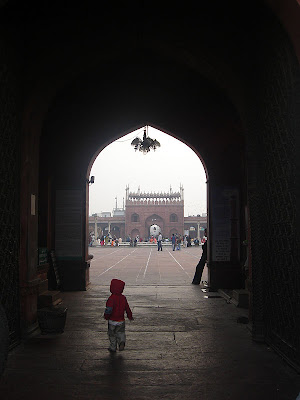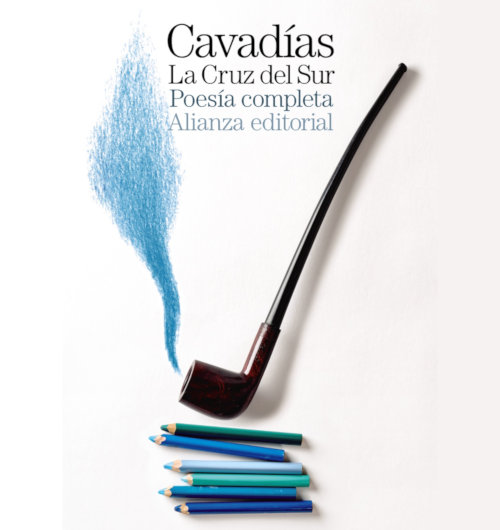Agra, Uttar Pradesh
As fate would have it, I ended up being convinced to go along with my new
 friends to Agra, to see the Taj Mahal (for the first time). We just barely managed to catch the 4.15 train leaving from Nizamuddin Station in Delhi. I wouldn't recommend it for a longer journey (say, an 18-hour train ride), but "ordinary sleeper" is just fine for 3 hour trip and provided my friends with their first-ever Indian Railways experience, while I crashed out on the top bunk.
friends to Agra, to see the Taj Mahal (for the first time). We just barely managed to catch the 4.15 train leaving from Nizamuddin Station in Delhi. I wouldn't recommend it for a longer journey (say, an 18-hour train ride), but "ordinary sleeper" is just fine for 3 hour trip and provided my friends with their first-ever Indian Railways experience, while I crashed out on the top bunk."Seeing" the Taj was only partially successful. Even when you're standing near it, it doesn't seem real, hazy as the polluted air is. The people who complain about the pollution in Agra are not exaggerating. It's all you can do to see or get a clear photo of the most famous monument in the world. At first, we thought it was just the north-Indian morning mist. So romantic!
After a few hours it became obvious that the mist was not going to burn off. It was semi-permanent haze. All our photos are in soft focus. This same pollution is evidently damaging the white marble permanently.
Perhaps something so hyped up can't help but be a disappointment. I have a few more grouses:
- Why is so much of the monument closed off? There are all kinds of upstairs balconies, adjacent buildings with turrets and towers and the four minarets. None of them are open for viewing (except the main rooms of the 2 flanking mosques, which in a way I liked better than the Taj itself).
-The museum, which is meant to be included in the huge ticket price (750Rs, about 300Rs more than it's wo
 rth) is closed now for repair. Of course, no one warns you of this when they sell you the ticket.
rth) is closed now for repair. Of course, no one warns you of this when they sell you the ticket.-The city immediately around the Taj ("Taj Ganj") is a very unpleasant, broken-down, dilapidated area. All manner of blocky concrete buildings have been allowed to spring up, which obscure any distant view (or any view at all) of the Taj itself. It certainly doesn't feel like the entrance way to one of the wonders of the architectural world, let alone to the universally recognized symbol of India. Ick.
-For ALL the money being dumped into it every single day, the waterways (an essential element of Mughal architecture) should have been restored by now. Fountains, channels, reflecting pools and so on.
-The explanatory plaques are so verbose and badly written as to be unreadable. I tried to read one of them twice and felt like I had been hit over the head with a thesaurus. I actually felt more confused after reading it than before.
-Inside the tomb itself there is absolutely no artificial light. You really can't see and appreciate the intricate stone inlay work the tomb is so famous for. And the centrepieces, which are the cenotaphs of the Emperor and his favourite wife, are nearly invisible. A wooden screen has been built around the original marble jali screen that prevents you from getting anywhere near the detailed work. Since you are not allowed to bring in any bags at all, none of us had our flashlights to illuminate the interior. Disappointing.
On the plus side:
-Everyone we encountered in Agra, including the persistent touts, were very kind and pleasant. The rickshaw pullers, the hotel guys, the police at the gate of the Taj, everyone was really lovely. Of course many were pushy with their sales technique, but they did take no for an answer...after about half an hour.
(However, they are allowed to solicit you right up to the bag check room at the Taj Gates. I mean, almost as you are checking in your bags, they are still pleading with you.)
-Best thing to do is arrive very early, about 7am, and wander around the outside rose garden at the West Gate. (Just pay the gardener, who appears magically from the mist, 50rs or so "as you like"). The mist (as opposed to smog) is still on the ground, the roses were in full bloom, and the Hindu temple next door set up a lovely wail of devotional music just as the sun was rising.
This was really the best moment of the day.
-You get great perspectives of the Taj itself by going into the 2 mosques flanking it from either side. They are warm brown sandstone and have the feeling of chocolate cakes placed next to the Taj's frothy wedding cake. Views of the Taj from inside these mosques are some of the more well-known images of the building.
-A community of craftsmen are still hard at work chipping and carving away, to restore various panels on
 the outbuildings. It is mind-boggling to watch the precise "chink, chink, chink" of the shilpas, changed so little since the days of Mumtaz Mahal. For some reason, the ASI has put up signs saying "construction and renovation work in progress, no photography allowed" - I can't imagine why not. India is the last place in the world that still has all the masters of these traditional skills, and watching them at work is a real delight for those of us from mass-produced societies.
the outbuildings. It is mind-boggling to watch the precise "chink, chink, chink" of the shilpas, changed so little since the days of Mumtaz Mahal. For some reason, the ASI has put up signs saying "construction and renovation work in progress, no photography allowed" - I can't imagine why not. India is the last place in the world that still has all the masters of these traditional skills, and watching them at work is a real delight for those of us from mass-produced societies.So, we snapped some photos of the craftsmen anyway, before some fat bearded guy chased us off.
-Even when it is crowded, the structures are so vast that the people seem like scurrying ants. In fact some of the better photos we got show visitors floating through the oceans of marble terraces and platforms, dwarfed by the minarets and walls.
-I was also happy to see quite a few less-affluent Indians, who seemed to have come from villages, enjoying the Taj, dressed as they were in colourful Rajasthani turbans and flowing dhotis. One defense of the outrageously high entrance fee is that it "subsidizes the poor Indians." Of course, it is not my responsibility to do that, any more than it is an Indian tourist's job to subsidize poor Americans, but I was glad to see that perhaps the inflated foreign fees do help some less fortunate Indians enjoy such an experience. The Indian middle class do not seem eager to step forward and subsidize this activity themselves, as is their civic duty.
-One thing I didn't manage to do (this time) was cross the Yamuna river and view the Taj from that vantage point. An enterprising local was offering camel rides there over on the sandy river bank. Another guy is offering rowboat rides past the Taj from that side.
We did notice that, on the Taj side, down by the river bank, there were sandbagged soldiers with machine guns camped out. Sad, but a reality. Anything that is a symbol "of India" these days (like the India Gate I saw a few days ago) has to be carefully guarded.
From racing to get the train and then getting up so early, I was too burned out to take in the Agra Fort or Fatehpur Sikri. Maybe some other time. My friends and I were on a tight schedule but I think the best thing would be to rent a bicycle and explore all the historic monuments at a leisurely pace, for a day or two.














3 comments:
I guess the right argument for the differential pricing should be buyer "willingness to pay". For a tourist from the U.S., $20 (or less) to see the Taj does not sound like much - it's the price of a movie ticket, or a large pizza.
Good post.
In that case, a glass of chai should be $5 for Americans because that's what it costs at Starbucks. The fact is, we are NOT in America, we are in India, and it costs 5 Rupees.
There is no argument for a price differential that is based on race, which all the Indian price differences are. Wealthy NRI tourists come and pay the Indian price because they "look Indian," so do Nepalis. I am resident in Nepal (have the nontourist visa to prove it) and have been here for 5 years - not a tourist. But, because of my skin colour, I have to end up subsidizing not only poor Indians, but wealthy ones.
If the price difference were TRULY based on nationality, everyone - including brown people - would have to show their passports and pay accordingly.
Also, considering the enormous entry fee, one would expect to see the entire monument, not just one room with no lighting.
I'll go again once I get my residential permit and can pay the correct price.
I agree with you that NRIs should pay more, going by the same logic.
On the glass of chai, my guess is most Americans would buy the $5 chai at the Starbucks-equivalent anyway :) As would the said affluent NRIs..
Post a Comment